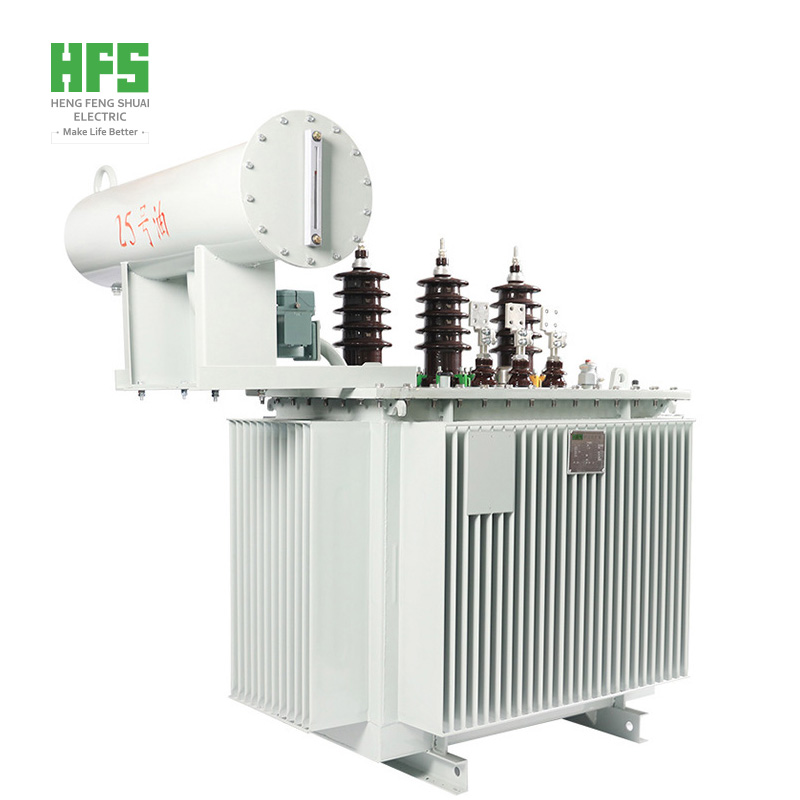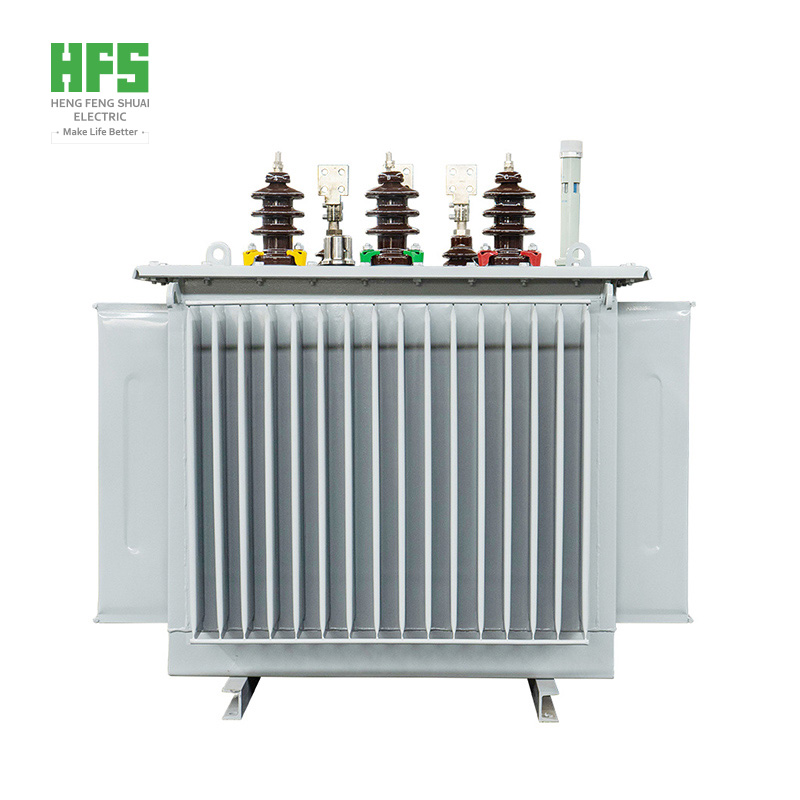Analysis and Prevention of Insulation Accidents in Power Transformers
The safe and stable operation of power transformers is increasingly receiving attention from all walks of life, especially as more and more large capacity transformers enter the grid for operation. This can cause transformer failures, which will affect normal production and people's normal lives. In addition, the shutdown and repair of large transformers will bring significant economic losses. In this case, understanding the factors that affect transformer insulation can cause transformer damage, It has certain benefits for the safe and stable operation of transformers, allowing them to operate in a controlled state for a long time, avoiding transformer damage, and has practical significance for the safe and reliable operation of transformers.
1.1 Classification of Insulation Accidents in Transformers
The insulation accidents of transformers are generally divided into the following four categories:
1.1.1 Winding insulation accidents
Refers to insulation accidents caused by discharge or burning of main insulation, turn insulation, inter section insulation, lead insulation, and end insulation.
1.1.2 Bushing insulation accidents
Refers to the insulation damage caused by internal insulation discharge of the casing, and even the explosion of the porcelain sleeve. It also includes surface discharge of the outer insulation of the casing and breakdown of the air gap.
1.1.3 Insulation accident of tap changer
Mainly refers to the serious decrease in the insulation strength of the oil in the switching switch oil chamber, which cannot extinguish the arc during switching and tapping, causing the on-load tap changer to burn out. In addition, there are also accidents of phase to phase, phase to ground, or stage to stage short circuits caused by discharge between exposed conductors of non excitation tap changer and on load tap changer.
1.1.4 Iron core insulation accidents
Refers to the insulation damage of the silicon steel sheet of the iron core to the ground, causing multiple grounding points of the iron core. In addition, it refers to the insulation damage between the frame connection points of the iron core, which generates circulating currents and causes local overheating faults.
Among the four types of accidents mentioned above, winding insulation accidents pose the greatest harm.
1.2 Root causes of transformer insulation accidents
To analyze the root cause of transformer insulation accidents, the electric field strength acting on the insulation is divided into the applied electric field strength (referred to as the applied electric field strength) and the withstand electric field strength (referred to as the withstand electric field strength). The action field can be further divided into lightning impulse action field strength, operation impulse action field strength, and power frequency action field strength. The insulation components with different field strengths have their own withstand field strengths for these three types of applications. But their common point is that if the applied field strength is greater than the withstand field strength, there will be an insulation accident. According to the counterbalance relationship between action field strength and tolerance field strength, it can be divided into three situations:
1.2.1 Excessive field strength
For example, the third winding (10kV or 35kV winding) of 110kV and 220kV step-down transformers experiences an applied field strength higher than the normal withstand field strength of the transformer itself during lightning strikes, leading to insulation accidents caused by lightning damage. Accidents of this kind occur every year. What percentage of the total winding insulation accidents account for.
1.2.2 Excessive action field strength combined with decreased tolerance field strength
If the insulation of some transformers is damaged during operation, it is found during disassembly inspection that the insulation is damp. Lightning shock is not as sensitive to moisture in oil-paper insulation as operational shock. So there are not many accidents caused by this reason, accounting for about a few thousandths of the total winding insulation accidents.
1.2.3 Withstand Field Strength Reduction
If the withstand field strength of the transformer decreases during normal operation and an insulation accident suddenly occurs under normal working voltage. Such insulation matters
Preventive measures
To prevent insulation accidents of transformers under normal working voltage, one is to limit the content of free water and quasi free water, and the other is to limit the local accumulation of free water. Corresponding measures should be taken from the four stages of manufacturing, installation, maintenance, and operation.
3.1 Manufacturing Measures
Design the internal insulation structure of the transformer to strive for uniform distribution of working field strength and as low as possible. For example, the inter turn working field strength should not be greater than 2kV/mm.
After vacuum drying of the transformer (preferably using kerosene gas phase drying), the water content in the solid insulation should be less than 0.5%, which means that there is basically no free water.
Strictly carry out vacuum refining. Any moisture adsorbed on any part of the transformer that may come into contact with oil during oil injection should be removed. The water content of the injected oil must be less than 10mg/L. Please note that 10mg/L means that every cubic meter of oil carries 10g of free water.
3.2 Installation Measures
During the installation process of transformers, it is impossible not to come into contact with the atmosphere. Therefore, insulators and metal surfaces will adsorb moisture from the atmosphere. In order to restore the moisture inside the transformer to the factory level, strict vacuum drying and vacuum oil injection must be carried out after the transformer is installed. The key points are as follows:
The ultimate vacuum degree of the vacuum system used for vacuum pumping (including vacuum pumps, pipelines, valves, and gauges) must be less than 10Pa.
All insulators and metal surfaces (including panel radiators) or other solid surfaces (such as lower ceramic sleeves) that will come into contact with oil must be within the vacuum pumping range.
During the vacuum pumping process, leakage should be checked and dealt with at any time. When the vacuum degree reaches the actual highest possible level (the minimum requirement for the highest level should not be less than 133Pa), this vacuum degree must be maintained while the vacuum pump continues to operate. (abbreviated as dynamic maintenance)
The dynamic holding time of vacuum should not be less than the water infiltration time. Infiltration time refers to the entire process from contact with the atmosphere to isolation from the atmosphere. This process includes the time it takes to open the sealing plate and directly enter the atmosphere for oil or nitrogen (or dry air) discharge, as well as the time it takes to seal the atmosphere in the fuel tank.
After the body is exposed to the atmosphere, there is no need to vacuum the surface to remove adsorbed moisture. Instead, oil or nitrogen (or dry air) is injected, which not only fails to remove moisture, but also drives the surface moisture deeper, increasing the difficulty of vacuum dehydration at room temperature.
Inject qualified oil using a vacuum filter under the condition of dynamically maintaining vacuum. The water content in the oil should be less than 10mg/L. If the water content of the injected oil is high, using hot oil circulation to reduce the water content in the oil will result in most of the water being absorbed by the paper, increasing the water content of the paper insulation.
For more transformer professional knowledge, please visit the Qingdao hengfengyou Electrical website https://www.hengfengyou.com









